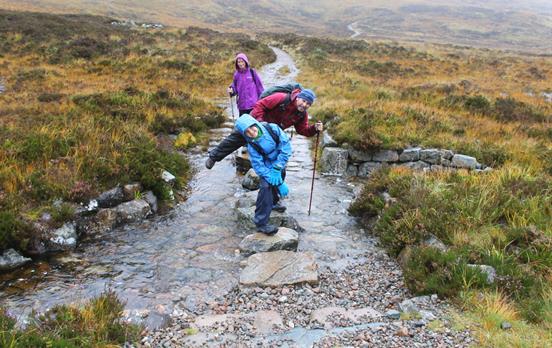While I am a huge fan of all things wild and wonderful and spend much of my walking time studying the fauna, there is one family of animals that I do tend to shy away from, the ticks! While all wildlife has its attractions, the fact that tick borne diseases pose dangerous health risks is the reason that you need to be aware of their presence.
What are they, where do they live, and what do they do?
Ticks are tiny members of the spider family, they live and love to suck the blood of larger animals, such as deer, foxes, badgers and sheep. However, when your seismic footfall sends such large fauna fleeing, the ticks may then turn to humans for their daily feed. They can turn up in a variety of habitats, including woodland, heath and moorland and even gardens and pub lawns. I know this because I once had an uncomfortable experience in a beer garden on a Scottish Island.
With an increase in deer populations throughout the UK, and their penchant for visiting new areas including urban environments, the ticks follow, and they are therefore on the increase. Their method to find a tasty host is to wait in the vegetation for a passing animal, and they have extremely acute senses to assist, including their ability to sense heat and expelled carbon dioxide. As a deer brushes past, or your legs move through the bushes and grass, they will be waiting, and they can be on you before you know it!
Indeed, you may not feel them on you at all, but they tend to head up your legs to the groin, armpits, neck and hairline where they then begin to feed. Following (and indeed during) a walk, I have found them in all sorts of places. Its therefore important that you have a very thorough search all over, and that includes your clothes! They can be tiny, but once they have had a feed, their fat, blood rich bodies can be easier to see.
The health issues
So, what is all the fuss about? Okay, apart from the fact that a blood sucking animal is enjoying you as its new host, which makes for a rather an unpleasant conversation at parties, the health risks of tick bites is a real concern. Ticks transmit bacteria when they feed, and this can lead to Lyme disease. This is a very unpleasant infectious ailment that manifests itself with flu like symptoms at the start, with associated muscle and joint pain, headaches, chills and a general ‘unwell feeling’.
You may also notice an expanding red rash at the site of the tick bite area that can appear a week after occurrence. If you have started to feel unwell or noted any unusual symptoms during or following your sojourn into the countryside, it is imperative that you visit a doctor to get checked out. While a course of antibiotics will be effective in most cases, left untreated, Lyme disease can go on to create yet further even more serious conditions, so diagnosis and treatment is of critical importance.
Prevention is better than the cure
The ideal scenario of course is not to get bitten. Easier said than done perhaps, when you are wading waist deep in bracken! Firstly, before you even depart for the great outdoors, liberally apply insect repellent. You will probably have done anyway if you are heading into ‘midgie country’!
Light coloured clothing is also a good idea. This makes it much easier to spot the tiny terrors when they are making their way up your trousers. Long sleeves and long pants, with your socks tucked in, or wearing gaiters will all assist in preventing immediate access to your skin.
If possible, try to keep to the centre of paths, away from overhanging or trail side vegetation. Keep vigilant. Even when you are out on open grassland, as you may be out of the woods literally, but not figuratively!
When you are back at home or have arrived at your accommodation on your current adventure, take a shower and undertake your ‘full body tick inspection’. If you have access to a washing machine, washing and tumble-drying clothes on a high heat can be effective at removing any further threat.
How to check for ticks
Firstly, do not panic when you find a tick! I have many ticks on me over the year, perhaps not as many as my dog, ‘Biggles’, but quite a few. I’ve managed to remove them all with a minimum of effort. There are many ‘old wives tales’ out there about the best method to remove them, and in my experience, they are just that and are not effective.
The best tried and tested method and the only one to consider is to remove the tick with a tick remover! This is a small tool with a hooked cleft on the bottom which you slide between the tick and the skin. A bit of careful force and without twisting the body to leave the mouthparts still attached, voila, the tick is off! Fine tweezers are also good, but a tick removal tool can easily be picked up online or in a good outdoor shop.
Once the tick is off, it is good if you can swab the affected area with a bacterial wipe and wash with soap and water when you get the chance. Then keep an eye on the area over the coming weeks. If you note any unusual symptoms, such as those described above, head to the doctor and do not forget to say that you have been bitten by a tick!
Tick all the boxes and relax!
Most tick bites are not an issue, so I do not want to put you off heading into the countryside. Just be vigilant and if you are bitten, stay calm, deal with the issue and follow up with the doctor if necessary. Remember, there is a plethora of interesting fauna to observe in these very same environments. It just so happens that the tick has also cottoned on to this!



























 Canada
Canada